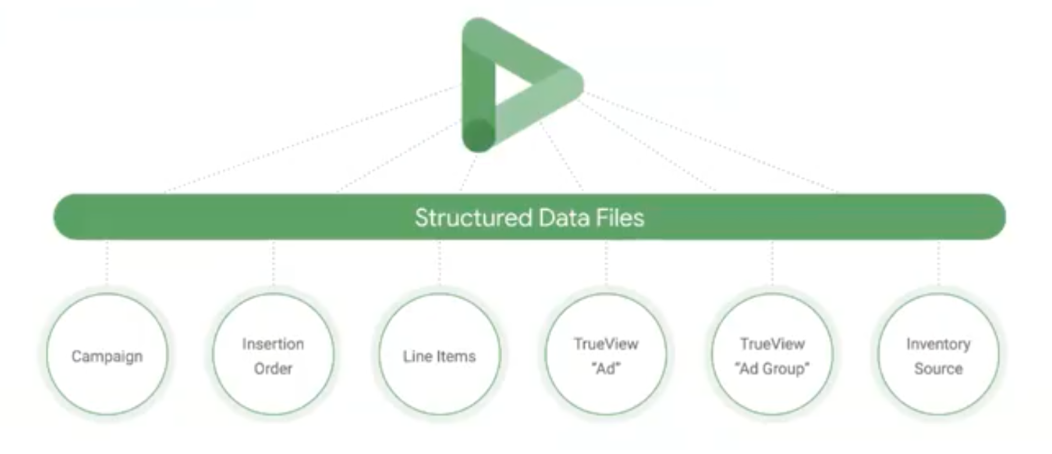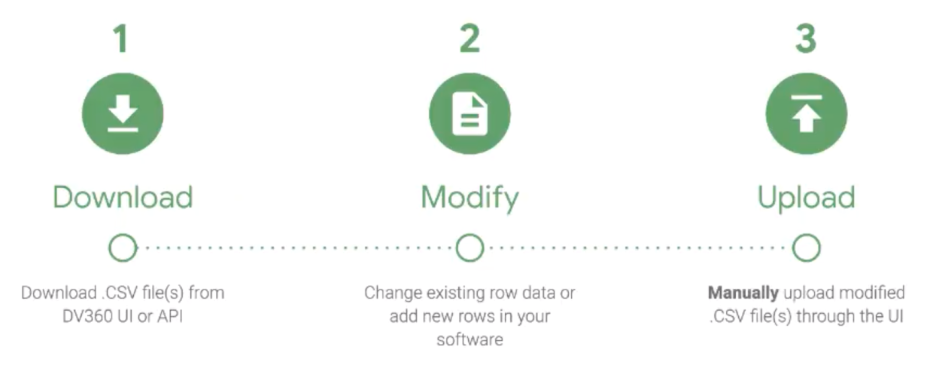What are SDF?
Structured Data Files (SDF) spreadsheets are .csv files that make it easy to create and edit campaigns, insertion orders, line items, TrueView ads, TrueView Ad Groups & Inventory sources in Display & Video 360 (DV360).

Why are they useful?
SDF can help you to:
- Quickly create many campaigns, insertion orders, or line items. You can create new insertion orders and line items entirely using SDF or you can add line items using SDF to preexisting insertion orders.
- Bulk edit across multiple campaigns, insertion orders, or line items at the same time.
- Optimise existing line items.
Using SDF is a great way to automate the manual tasks in DV360. Initially SDF were built for machines and were not intended to humans. However it became obvious that they could help humans to save time and get a lot done at once.
A great thing about SDF is that DV360 will verify your uploaded files and show a status for each file: “updates applied”, “partially successful” or “failed”. You will also receive an email confirming that your new item has been successfully created or notify you of any errors that were encountered while creating it.
How to proceed concretely?
If you want to create a new campaign, it is always recommended to start creating your campaign(s), then your insertion order(s) and finally your line item(s). The way of working is always the same: you download a file from DV360, you adapt it based on your needs and you upload it back to DV360:

There are two different ways to create line items:
- Download the line items file from another insertion order with similar strategy and targeting, and adapt them.
- Create a line item with the right targeting and settings, download it, and add more rows for the new line items.
When creating your line items make sure the insertion orders you want to use for your line items have been created beforehand as you will need the IDs of these insertion orders.
It is important to note that uploading a line item without a line item ID will create a new line item, while uploading a line item with an existing line item ID will modify that line item.
Here below are some examples when SDF could save you some time:
- Create new campaigns - If you are running a campaign for one market and you want to run the same campaign over 10 other markets. In this case you don’t have to start from scratch, you can use SDF and update the creatives and location targeting.
- Edit existing line items - If you need to modify the assignment of 500 creatives, which would take you hours if you do it manually.
- Optimise existing line items - If you see that some creative sizes are underperforming you can quickly optimise your campaigns via SDF by excluding them in bulk: go to optimizations menu, check which creative size are performing worse, check the creative IDs, download SDF, remove this creative in question, upload the SDF.
Conclusion
SDF is certainly the way to go when it comes to set-up or optimisations that requires a lot of time in DV360. Even though it still has some limitations, it is definitely useful for some tasks. We’re excited to find out more about what SDF has to offer and what will be the next features to be released in the future!



